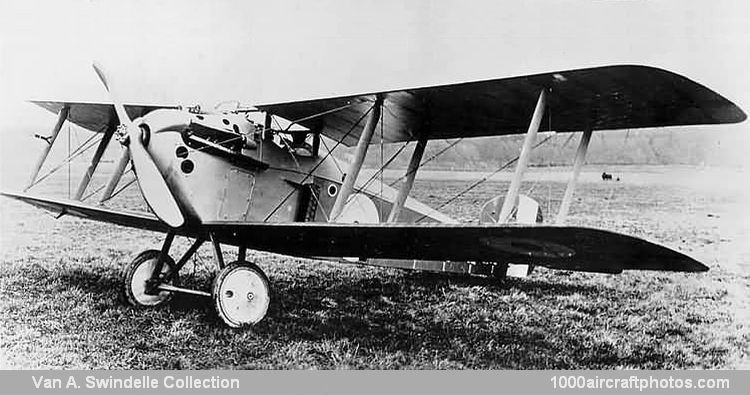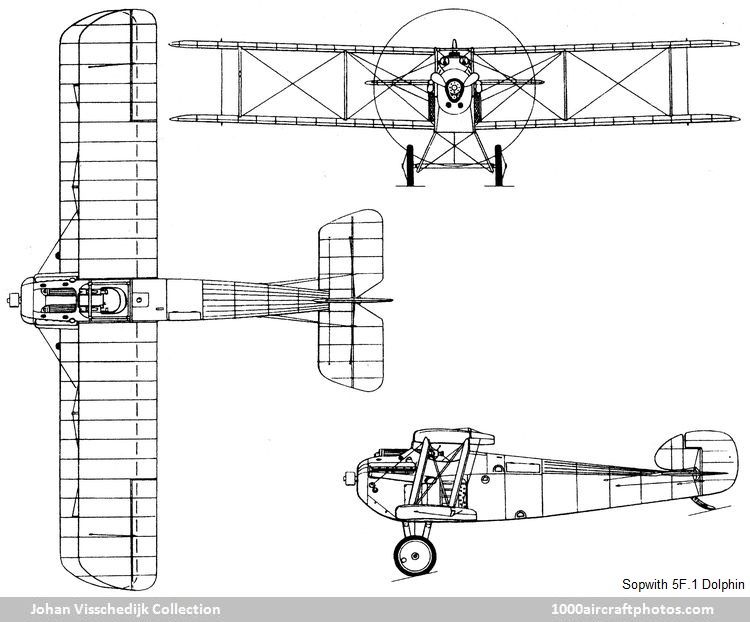The first of four Dolphin prototypes was flown in late May 1917, later the last prototype was tested by the well-known Captain William 'Billy' Bishop at the General Headquarters of the RFC in France. The flying results of the prototypes resulted in the largest order to date by the Ministry of Munitions. Under contract AS.17137 of June 29, 1917, 500 aircraft (s/n C3777 to C4276) were ordered from Sopwith, the first aircraft was delivered in November 1917.
The first Dolphin squadron was deployed to France in February 1918, and the decision was taken to license-build a version for the USAAS in France. This, the Dolphin Mk.II powered by a 300 hp Hispano-Suiza engine, was to be manufactured by the SACA (Societe Anonyme des Constructions Aéronautiques) and the USAAS anticipated taking delivery of 2,194 by mid-1919. In the event, only a few Dolphin Mk lIs were completed before the Armistice prompted cancellation of all contracts. Difficulties with the reduction gear of the original 200 hp engine led to the conversion of many to direct drive, aircraft fitted with the modified power plant being designated Dolphin Mk.III and some engines having their compression ratio raised to boost output to 220 hp.
In all 2,150 Dolphins were ordered, eventually 1,532 aircraft were delivered (of which all but 121 were built during 1918) before production ceased. Both Dolphin Mk.I and Mk.III were finally withdrawn from RAF service mid-1919.
The following data relate to the Dolphin Mk.III.
Span: 32 ft 6 in (9.90 m)
Length: 22 ft 3 in (6.78 m)
Height: 8 ft 6 in (2.59 m)
Wing area: 263.25 sq.ft (24.46 sq.m)
Weight empty: 1,466 lb (665 kg)
Loaded weight: 2,000 lb (907 kg)
Max speed: 128 mph (206 kmh) at 6,500 ft (1,980 m)
Climb: to 6,500 ft (1,980 m) 6 min 20 sec

